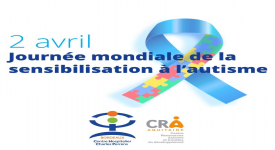The physical and psychosocial benefits of a family judo program for parents of children with Autism Spectrum Disorder: A pilot study
Disabil Health J. 2024 Apr 16:101631. doi: 10.1016/j.dhjo.2024.101631. Online ahead of print.
ABSTRACT
BACKGROUND: Parents of children with Autism Spectrum Disorder (ASD) tend to have high levels of stress and poor health habits. There is a lack of interventions that focus on improving health outcomes in parents of children with ASD.
OBJECTIVE: To examine the physical and psychosocial effects of a family-based judo program on parents of children diagnosed with ASD.
METHODS: This study utilized a pre-post single group design. Eighteen parent-child dyads participated in a 14-week judo program for families of children with ASD. Judo sessions were held once a week for 45 min. Parents wore wrist accelerometers to assess physical activity/sleep quality, and completed surveys regarding self-reported stress levels pre- and post-judo. Parents also completed open-ended questions regarding their experience in the program. Paired sample t-tests were conducted to examine changes in stress, physical activity, and sleep quality from pre-to post-program.
RESULTS: Both a decrease in parental stress (47.77 vs. 41.61, p < 0.01) and an increase in minutes per day of physical activity (35.49 vs 45.94, p = 0.002) were observed from baseline to post-program. Fourteen of the 18 parents (78 %) reported at least one psychosocial benefit (e.g. increased self-confidence) or physical health benefit (e.g. increased physical activity) from participation in the program.
CONCLUSIONS: A family judo program may provide health benefits, such as reducing stress levels and increasing physical activity in parents of children with ASD. Further research involving larger sample sizes is necessary to better determine the effects of judo on both parents and their children with ASD.
PMID:38702229 | DOI:10.1016/j.dhjo.2024.101631




